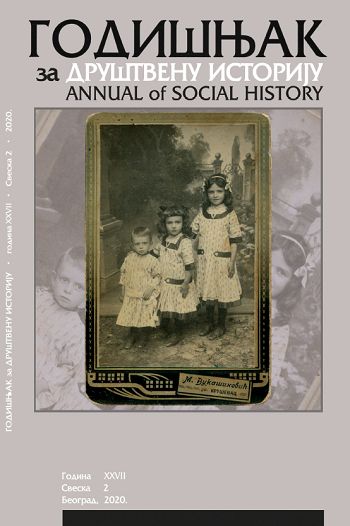Прославе православне Нове године између два светска рата према писању београдске штампе
The Orthodox New Year’s Celebrations in the Interwar Era, Based on Reports from the Belgrade Press
Author(s): Radmila RadićSubject(s): Cultural history, Local History / Microhistory, Social history, Interwar Period (1920 - 1939)
Published by: Udruženje za društvenu istoriju
Keywords: Orthodox New Year; Kingdom of SCS / Yugoslavia; Belgrade; celebrations
Summary/Abstract: The Orthodox New Year started to be celebrated in Belgrade as early as in 1920, and a bit later in the interior. Until 1924, the King received the congratulations at the Court or participated in the celebration. However, there are no more similar data after this year. The Orthodox New Year took on a theological dimension only in 1930, when Patriarch Varnava instituted the ritual of conducting solemn vigils and speeches on 13th January and the liturgies at the Belgrade Cathedral on 14th January. This tradition was kept until 1941. During this period, New Year’s Eve festivities in Belgrade have been increasingly massive and were held in the center of the city, but also in the suburbs. The most prestigious hotels and clubs of the capital the celebrations were reserved for the affluent elite who aspired Europeanization or Americanization, while in other restaurants or in the suburbs, New Year’s Eve was comparatively modest and livelier according to newspaper reports. Rare criticisms of unnecessary expenditure during the double New Year’s festivities appeared, but there has not been evidence that anyone took this problem seriously. From the beginning there was a significant difference between the Catholic and the Orthodox New Year, between “them” and “us”, which represented a form of protest. However, adherents of other faiths frequently participated in the celebrations. It suggests that there was no insistence on differences during the celebration. The crowds in the Belgrade Cathedral in 1938, after the Concordate conflicts and the suggestion in January 1941 that “heartfelt Serbianisation” had taken place during the celebration, indicate that this celebration had acquired a wider national dimension in moments of social crisis. This supports the thesis that social developments have changed holidays, but at the same time that this double holiday transformed to some degree the relation of society towards the conventional and official religious holidays that existed in Serbian society before the First World War
Journal: Godišnjak za društvenu istoriju
- Issue Year: 2020
- Issue No: 2
- Page Range: 65-81
- Page Count: 17
- Language: Serbian

